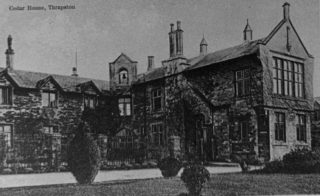Union Workhouse (Occupants)
Thrapston
Thrapston District Historical Society
Who entered the Workhouse?
Generally it was people who were too poor, too old or too ill to support themselves and had no family to help them.
Also the workhouse was often the only place that unmarried pregnant women could go during and after the birth of their child as they were often disowned by their families.
In the 19th century, before public mental asylums, the mentally ill were often sent to the workhouse.
Workhouses were never prisons, and entry into them was generally a voluntary, although often painful, decision. Nevertheless, many inmates become long-term residents of the workhouse
Up to 20 % of inmates remained in the workhouse for more than five years. These were mostly consisted of elderly, chronically sick, and mentally ill paupers.
Union workhouse inmates were strictly segregated into seven classes
- Aged or infirm men
- Able bodied men, and youths over 13 yr
- Youths and boys 7 – 13 yr
- Aged or infirm women
- Able-bodied women and girls over 16 yr
- Girls 7 – 16 yr
- Children under 7 yr
The daily routine
Prescribed by the Poor Law Commissioners in 1835
Hour of Rising 6 am
Interval for Breakfast 6.30 am to 7 am
Time for setting to Work 7 am
Interval for Dinner Noon to 1 pm
Time for leaving off Work 6 pm
Interval for Supper 6 pm to 7 pm
Time for going to Bed 8 pm
Note: 29 September to 25 March – The hour of rising and going to work was one hour later
Life in the Workhouse
For the occupants of the Workhouse, life was nothing like it would have appeared to the casual passers by, who would only see the imposing frontage of the Union Workhouse building in Thrapston and others across the country.
The cost of keeping the “inmates” was borne directly by the local ratepayers and so every effort was made to persuade the poor not to “fall on the rates”. Life was made difficult for them in as much as families were split up and everyone was assigned a daily task such as unpicking old tarry rope.
Inmates had to have no personal possessions before they could be declared destitute. Their clothing on admission was taken from them and a workhouse uniform issued. Anyone leaving the Workhouse without permission would be charged with stealing the uniform.
The evidence available about Thrapston Union Workhouse suggests that although the life was hard, it was not as harsh as other workhouses elsewhere in the country.
Ref:
Extract from a joint publication by Thrapston District Historical Society and East Northamptonshire Council to celebrate the refurbishment of the old Union Workhouse to accommodate the new Council Offices.
Copyright Thrapston Heritage. Website by CommunitySites







No Comments
Add a comment about this page